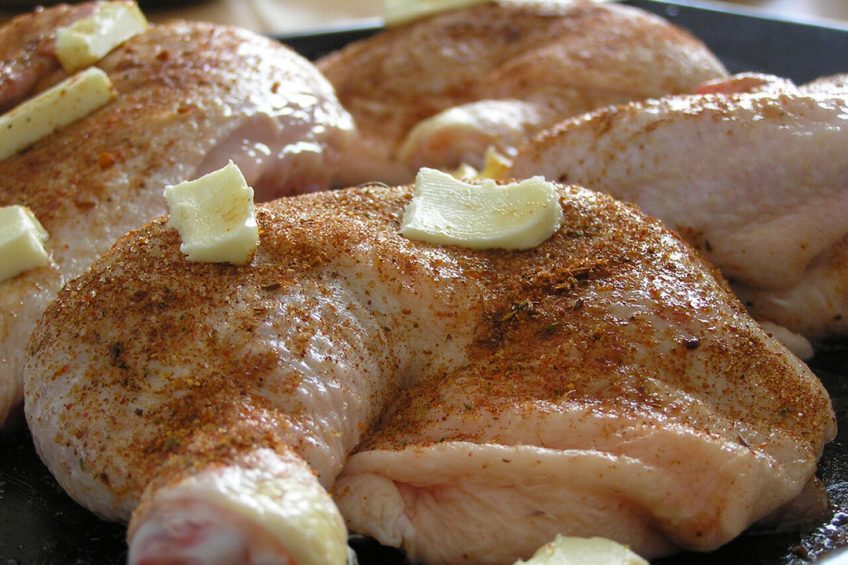Bulgaria’s poultry meat demand reaches record levels

Consumer demand for poultry meat in Bulgaria reached record levels in 2019.
Duck meat production, however, was severely affected by HPAI outbreaks in the country. Meanwhile, imports of broiler meat grew by over 10% due to favourable local demand. Prospects for 2020 are cautiously optimistic and highly dependent on Bulgaria’s Covid-19 situation.
Bulgarian broiler production grew 2% in 2019, and based on data from January to March 2020, broiler slaughter increased just 0.4% and duck slaughter 42%, resulting in 11% growth in total poultry meat output over the corresponding period in 2019. However, Post forecasts that 2020 poultry meat demand will likely decline due to Covid-19’s impact on the economy and trade. A recovery in local demand and production is anticipated in 2021.
Bulgaria’s poultry sector 2019
In 2019, large farms (over 10,000 birds), which account for 97.6% of the total inventory, registered a decline in stocks, while the number of small farms, which collectively account for only 2.4% of Bulgaria’s total chicken inventory, tripled and their stocks increased by almost 500%. Vertical integration and export demand continued to shape the industry. Commercial poultry production stagnated while non-commercial production continued to decline by 13%.
Broiler meat output increased 2.1% and accounted for 78% (76% in 2018) of commercially produced poultry meat in 2019, compared to 17% for duck meat. The average carcass weight was consistent at 1.7 kg. The market share for cuts expanded and accounted for over 46% of broiler meat retail stocks. This trend indicates an increasing demand for value-added and convenience products. Duck meat output declined substantially by 24.5% due to HPAI outbreaks. The decline in duck meat production drove the total poultry meat production figure downward.
Track the movement of Avian Influenza
HPAI outbreaks on duck farms
Duck meat output decreased 24% due to animal health challenges in 2019, and this year, in February and March, Bulgaria had already noted 8 highly pathogenic avian Influenza (HPAI) outbreaks, mainly on duck farms. The most recent outbreak occurred in early June. The Bulgarian Food Safety Agency has consequently updated 2 major regulations regarding disease control for poultry farms, introducing more stringent biosecurity standards and stricter surveillance.
Poultry popular, but consumption to drop
Poultry consumption has increased due to higher purchasing power and the perception that poultry is a healthier animal protein. In 2019, poultry consumption saw a 2% increase over 2018 to a record level of 186,000 mt, or from 11.4 kg/capita in 2018 to 12.0 kg/capita in 2019. The average quantity of purchased poultry meat by a household also increased from 24kg (2018) to 25.1 kg (2019). In 2020 to date, retail sales of broiler meat have been stable and growing since many consumers have switched to buying less expensive proteins/meats. On the other hand, the shutdown of the food industry outlets has already negatively impacted sales. Higher-value meats, especially duck meat, is projected to be hit hard and prevent any growth in consumption. Total poultry meat consumption is likely to stagnate or witness a temporary drop followed by a recovery later in 2021.
 Rabobank: Global poultry outlook to improve in H2 2020
Rabobank: Global poultry outlook to improve in H2 2020
Global poultry sector to recover in next half of year but problems still exist in Europe according to Rabobank analysts.
Imports dominated by broiler meat
Bulgaria’s poultry imports are dominated by broiler meat, while export revenues come mainly from duck products. It has been reported that 2020 duck meat exports to primary markets in France and Belgium, to date, have been hit hard by the Covid-19 pandemic. 2019 Bulgarian poultry imports by volume increased by 1.8% over 2018. Major suppliers were Poland (40%), Romania (18%) and Hungary (12%). Broiler meat imports accounted for 94% of total poultry meat imports and grew over 10% in volume. Frozen broiler meat imports in 2019 increased by 2.2% to 54,000 mt, but its share in total poultry imports was stable at 50%. Frozen chicken leg quarter imports grew 2% over 2018 and remained Bulgaria’s primary imported poultry product. Frozen chicken leg quarters accounted for 44% (43% in 2018) of total broiler meat imports by volume in 2019.
From January to March 2020, broiler meat imports declined 10%. Poland continued to be a leading supplier, although its exports to Bulgaria dropped by half compared to the corresponding period in 2019. Poland was followed by Romania, which also reduced its exports to Bulgaria by 26%. Conversely, Hungary, and Greece boosted their exports to Bulgaria by double-digit growth.
A decline in poultry exports
In 2019, poultry exports declined 6%. Major markets were Greece and Romania for broiler meat, and France and Belgium for duck meat. Broiler meat exports in 2019 decreased by 5% in tonnage. Greece was the leading market and accounted for 58% of broiler meat exports, and Romania for 12%. From January to March 2020, broiler meat exports declined 22% by volume from the same period in 2019. Exports to Greece and the UK declined while trade with Romania, Italy and North Macedonia saw good growth. The difference between average prices for broiler meat in Bulgaria and the EU-28 provides an advantage for local exporters. In 2019, the average Bulgarian price was € 150.56/100 kg (negative growth rate of – 1.8% from 2018) compared to € 189.77/100 kg for the EU average (negative growth rate of -0.3% from 2018).
The information in this article is based on a USDA GAIN report prepared by Mila Boshnakova-Petrova












